The content of the article
- 1 Why do you need to sterilize jars
- 2 Preparing cans for sterilization
- 3 Steam sterilization
- 4 Sterilization of cans in the oven
- 5 Sterilization of cans in the microwave oven
- 6 Sterilizing the cans in the dishwasher
- 7 How to sterilize caps
- 8 Pasteurization
- 9 What not to do when home canning
- 10 Video: how to sterilize jars
Every housewife tries to keep vitamins from vegetables, fruits and mushrooms for the winter. One of the proven methods is their conservation. It is difficult to find a person who refuses tea with homemade raspberry jam or a snack in the form of crispy cucumbers. At the same time, in order for the blanks to please you all winter you need to properly sterilize the cans for them.
Why do you need to sterilize jars
On the surface of the cans lives a lot of bacteria and microorganisms. During sterilization, they die due to the high temperature.
In canned food an optimal environment is created for the life and reproduction of bacteria. If you refuse sterilization,the microbes will start the fermentation process in the blanks and your reserves will deteriorate. This is usually expressed in swelling of the cap or clouding of the brine.
Preparing cans for sterilization
- Inspect the banks for the presence of chips or cracks. A chip on the neck will certainly cause bloating and tearing of the lid. A cracked jar can explode when boiling water is poured into it.
- Rinse whole jars thoroughly with warm water and scouring powder. Dry the jars with a towel or just leave them on the table to dry for a while. Sterilize is recommended only for dry containers.
Steam sterilization
This is the oldest and most reliable method, your mothers and grandmothers probably used it. However, steam can be sterilized in different ways.
- With the help of a kettle, turks or other dishes with a narrow neck. A jar is put on the nose of a boiling kettle or the Turks are inserted upside down into the neck. Liter cans are sterilized 7-10 minutes, three-liter - 15 minutes. As a rule, droplets of water no longer form on a fully sterilized jar.
- Using special round caps with holes for the neck of the jar. In this case, a pot of boiling water should be covered with a lid (there may be one or several round holes in it) and the cans should be inserted with the neck down. If you don’t have such a miracle, you can use an ordinary metal sieve. However, in this case, most of the steam will be wasted, and this will lead to an increase in humidity and temperature in the kitchen, which is undesirable in the summer.
- In a double boiler. If you are the owner of such a helpful assistant in the preparation of delicious and healthy dishes, you can use this method of sterilization. Clean jars are placed in a double boiler for 15 minutes and include cooking mode. The disadvantages of this method include the possibility of sterilizing a small number of cans, as the double boiler must be very spacious.
Sterilization of cans in the oven
Clean and necessarily dry banks put in the oven and turn it on to the maximum. Make sure that the temperature does not rise above 200 degrees. After 10 minutes, turn off the oven and leave the jars to cool in it. You can not immediately open the oven, as due to the temperature difference the glass may burst.
This method is convenient in the first place the ability to sterilize several cans at once.In addition, the temperature in the oven above the temperature of the steam, which allows you to kill more germs.
Sterilization of cans in the microwave oven
This is the fastest and easiest way to sterilize. Depending on the volume of the microwave, one or several clean cans are placed into it. The bottom of the can must be covered with water for about 2 cm. The microwave heats the water, not the air. The water in the cans boils and steam sterilization takes place. Dry jars in the microwave oven are not sterilized.
With a power of 800 watts, it will take 5-7 minutes to kill germs.
Sterilizing the cans in the dishwasher
The main advantage of this method is that the cans can be loaded into the dishwasher only by slightly rinsing them. In addition, during sterilization, you do not need to be distracted by the cans, and you can devote all the time to preparing products for seaming.
So, the dishwasher is turned on for the mode with the highest temperature (not less than 60 degrees) without the addition of cleaning products.
One of the disadvantages of this method is a small sterilization temperature, so the effect will be worse than using steam or an oven.
How to sterilize caps
Covers, like jars, must be cleaned before sterilization and carefully checked for dents, scratches or rust. Threaded caps are recommended to be renewed every year.
Clean lids can be dipped in boiling water for 3 minutes or sterilized in an oven with jars. In no case can not be sterilized metal covers in the microwave, it will lead to its breakage.
Pasteurization
Many housewives do not trust double or even triple pouring boiling water during preservation and resort to pasteurization, that is, to sterilization of cans with blanks. As a rule, it is required for the preservation of cucumbers, mushrooms and in recipes with a small amount of vinegar.
To do this, you need a spacious pan with a wide bottom. For three-liter cans enamel basin is perfect. At the bottom of the pan put a wooden lattice or a thin towel and put in it banks with blanks. The neck of the cans is covered with lids, but they are not twisted.
The pot must be filled with warm water so that it does not reach the neck of the cans of about 5 cm. After that, put the pot on the fire. Pasteurization time depends on the specific recipe, as a rule, it takes 15-25 minutes after boiling water.
Pasteurized cans are carefully removed from the water one by one and immediately rolled up. Before cooling banks are recommended to leave upside down.
What not to do when home canning
The most common mistakes that allow hostess in the procurement of vegetables and fruits.
- The use of poorly washed vegetables and fruits. Before laying the blanks on the cans, rinse them thoroughly under running water. Dirty vegetables can cause brine clouding. In addition, no one will like the crunchy sand on the teeth in the snack.
- Use old spoiled covers. Even a small defect on the screw cap will inevitably lead to its swelling. Remember also that vacuum covers, although very convenient to use, retain their sealed properties for only 3-4 months. If you want your workpiece to stand longer, use other options.
- Incorrect pasteurization cans. You can not put the jars with blanks directly to the bottom of the dishes, which are pasteurized. It is also undesirable that the sides of the cans touch each other when boiling. Put them away one by one, or shift them with a towel.
Thus, the sterilization of cans and lids is an integral step in the preservation of products. Regardless of what method of sterilization you choose, spend it according to all the rules. In this case, until the very spring, you can delight and amaze your family and friends with your culinary masterpieces under the lid.
Video: how to sterilize jars

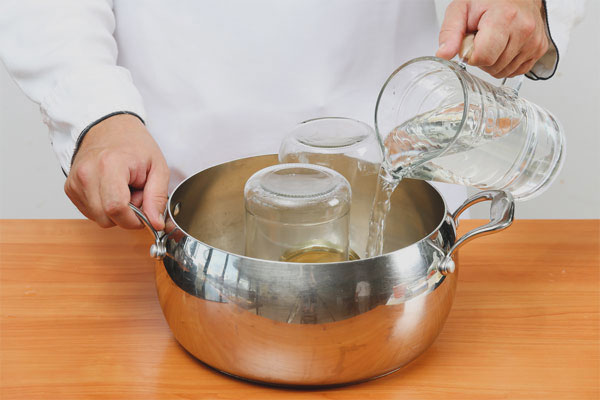
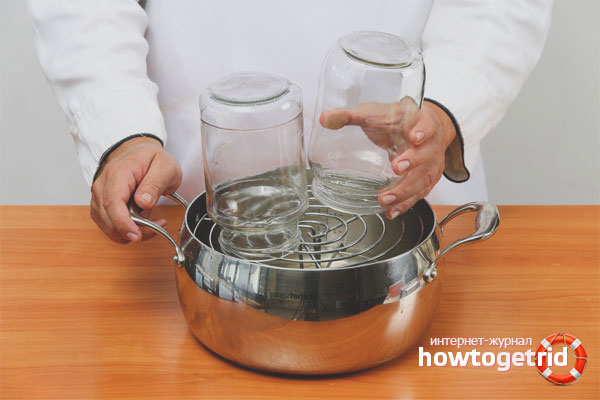
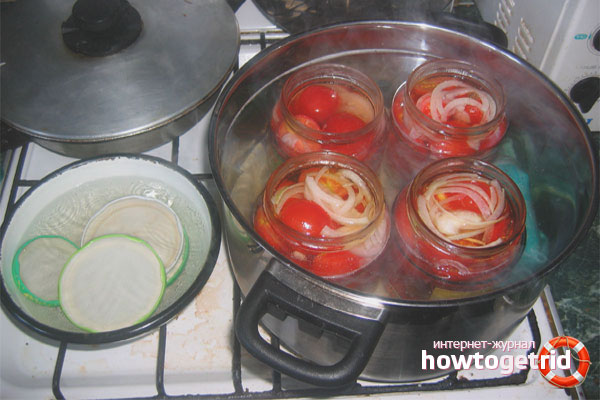

 3 votes, on average: 4,67 out of 5
3 votes, on average: 4,67 out of 5



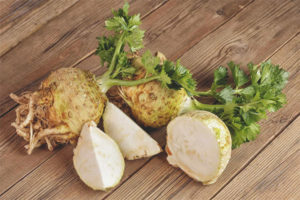
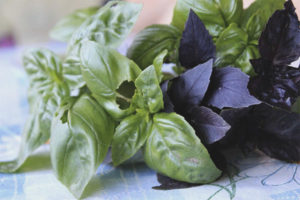

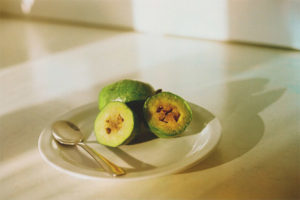
To send